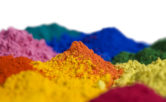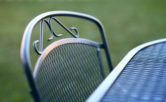
What Materials Can Be Powder Coated?
Powder coating is not just limited to traditional metals like steel, stainless steel, aluminum, brass, and copper, which are staples in everything from industrial machinery to automotive parts and decorative accents. Recent technological advancements have widened its scope to include non-metallic substrates such as plastics, composites, wood, and MDF. These materials, once considered unsuitable for powder coating due to their sensitivity to heat, can now enjoy a high-quality finish thanks to low-temperature and UV-cured powders. Let’s explore more!
Metals
Steel and Stainless Steel
Steel and stainless steel are the backbone of the powder coating industry due to their strength, durability, and widespread availability. These metals are integral to a vast array of products, from heavy machinery and automotive components to household appliances and outdoor furniture.
- Pre-treatment Processes: For steel, the pre-treatment often involves degreasing to remove oils and greases, followed by sandblasting or phosphating. Phosphating provides a protective layer that improves corrosion resistance and paint adhesion. Stainless steel may require a passivation process to remove free iron from the surface and enhance its natural corrosion resistance before powder coating.
Aluminum
Aluminum’s lightweight nature combined with excellent corrosion resistance makes it an ideal candidate for powder coating, particularly in industries like automotive (for parts like wheels and trim), aerospace, and architecture (for window frames, doors, and facades).
- Pre-treatment Processes: Aluminum pre-treatment typically involves cleaning and etching to prepare the surface, followed by a chromate or non-chromate conversion coating. This conversion coating forms a thin film on the aluminum surface that significantly improves adhesion and adds an extra layer of corrosion protection. In recent years, environmentally friendly alternatives to chromate treatments have gained popularity due to environmental regulations.
Brass, Copper, and Other Metals
Brass and copper are less commonly used due to their higher cost but are sought after for their distinctive aesthetic finishes. These metals are often used in decorative applications, such as lighting fixtures, hardware, and architectural accents, where the visual appeal of the metal is a key component of the product’s design.
- Pre-treatment Processes: Brass and copper require a careful cleaning process to remove any tarnish and oxides before powder coating. A mild acid etch can be used to clean the surface thoroughly, followed by a rinse and a conversion coating similar to that used for aluminum. This step is crucial for ensuring the powder coating adheres properly and the metal is protected against corrosion.
Non-Metallic Materials
Plastics and Composites
Plastics and composites have historically been challenging to powder coat due to their lower melting points compared to metals. However, recent advancements have significantly broadened the possibilities:
- Low-Temperature Powder Coatings: Special formulations have been developed that cure at temperatures low enough to prevent damage to heat-sensitive plastics. These powders typically cure at temperatures between 100°C to 140°C (212°F to 284°F), making them suitable for a wider range of plastic materials.
- UV-Cured Powders: For even more temperature-sensitive materials, UV-cured powder coatings present a solution. These coatings cure almost instantly when exposed to ultraviolet light, significantly reducing the exposure to heat and virtually eliminating the risk of warping or melting the substrate.
- Applications: Powder-coated plastics and composites are increasingly used in automotive parts, electronic casings, and outdoor furniture, where the durability and finish of powder coating are desired without compromising the integrity of the material.
Wood and MDF
Engineered wood and MDF (medium-density fiberboard) are gaining popularity as substrates for powder coating, thanks to their smooth surface and the development of suitable powder coating processes:
- Low-Temperature and UV-Cured Powders: Similar to plastics, engineered woods require powders that cure at lower temperatures or through UV radiation to prevent damage from heat. These powders allow for a durable, uniform finish that can enhance the appearance and longevity of wood products.
- Special Handling: The powder coating process for wood and MDF requires careful control of the heat to prevent warping or damage. Preheating the wood can help achieve a more uniform finish by reducing moisture content and improving powder adhesion.
- Applications: Powder-coated wood and MDF are used in a variety of applications, including furniture, cabinetry, and decorative items. The finish provides a durable, seamless surface that is resistant to scratches, moisture, and other environmental factors.
Pre-Treatment and Preparation
1. Cleaning
The initial step in the pre-treatment process involves thoroughly cleaning the substrate to remove any contaminants that could interfere with the powder coating’s adhesion. This includes the removal of oils, grease, dirt, and any other surface impurities.
- For Metals: Degreasing is typically performed using chemical cleaners or solvents. It’s crucial to ensure that the metal is completely free of oils, including those left by handling.
- For Non-Metals: Cleaning methods might be less aggressive, depending on the material’s sensitivity to chemicals and solvents. For plastics and composites, a mild alkaline or neutral cleaning solution is often used.
2. Surface Preparation
After cleaning, the surface requires further preparation to optimize powder coating adhesion and finish quality.
- Sandblasting (Abrasive Blasting): Commonly used for metal substrates, sandblasting effectively removes rust, scale, and old paint, providing a clean, rough surface ideal for powder coating adhesion.
- Chemical Etching: For certain metals like aluminum and galvanized steel, chemical etching is used to create a profile that enhances powder coating adhesion.
- Phosphating: A chemical conversion process that provides improved corrosion resistance and better powder coating adhesion, commonly used on steel substrates.
3. Applying a Primer
While not always necessary, applying a primer can significantly improve the adhesion and corrosion resistance of the powder coating, especially for outdoor applications or those subject to harsh environments.
- Zinc-rich Primers: Particularly beneficial for steel, providing cathodic protection against corrosion.
- Non-metal Primers: For non-metallic substrates, specific primers are designed to promote adhesion and fill in any imperfections on the surface.
Special Considerations
- Handling and Masking: Post-cleaning and preparation, handling the substrates with gloves to prevent oil and dirt contamination is crucial. Additionally, areas that should not be coated are masked to protect them from the powder.
- Inspection and Quality Control: Before proceeding to the powder coating application, a thorough inspection ensures the substrate is properly cleaned and prepared. Any defects or inadequacies in pre-treatment can significantly affect the final product’s quality.
Limitations and Considerations
Heat Sensitivity of Substrates
The traditional powder coating process involves curing at high temperatures, typically around 180°C to 200°C (356°F to 392°F), which can be unsuitable for materials that cannot withstand such heat without degrading or deforming.
- For Metals: Most metals tolerate high temperatures well, making them ideal candidates for powder coating.
- For Non-Metals: Plastics, composites, wood, and MDF require special low-temperature powders or UV-cured powders. These materials’ heat sensitivity necessitates the use of advanced curing methods that can provide the benefits of powder coating without compromising the substrate’s integrity.
Thickness and Uniformity
Achieving uniform thickness and coverage can be challenging with complex shapes or surfaces. Powder coating tends to build up around edges and corners, potentially leading to variation in thickness across the part.
- Edge Coverage: Special attention is required to manage the edge effect, where powder tends to accumulate less on sharp edges, leading to thinner coverage in these areas.
- Faraday Cage Effect: The electrostatic nature of powder coating application can create challenges in coating recessed areas, as the charged powder particles are repelled by charged areas, creating a “Faraday cage effect.”
Color Matching and Consistency
While powder coating offers a wide range of colors and finishes, achieving precise color matching can be difficult, especially for large or complex projects requiring consistency across multiple batches or parts.
- Batch Variability: Slight differences in powder batch formulation can lead to color variation, necessitating strict quality control and batch testing to ensure consistency.
Environmental and Regulatory Considerations
Although powder coating is more environmentally friendly than liquid painting due to the absence of volatile organic compounds (VOCs), the process and materials still require careful handling and disposal to minimize environmental impact.
- Waste Management: Unused or over-sprayed powder must be disposed of properly to prevent environmental contamination.
- Regulatory Compliance: Compliance with local and national environmental regulations is essential, especially when dealing with metal pretreatment chemicals and waste management.
Durability, Versatility, and Customization with AR Powder Coating
Powder coating stands as a versatile and durable finishing technique suitable for a broad range of materials, from various metals to non-metallic substrates like plastics and wood. Through detailed pre-treatment and innovative approaches such as low-temperature and UV-cured powders, it offers environmental benefits and extensive customization options. The technique overcomes challenges related to heat sensitivity, thickness uniformity, color matching, and environmental regulations, ensuring a high-quality and resilient finish.
AR Powder Coating is at the forefront of leveraging these advancements to provide superior powder coating services. We cater to diverse requirements, ensuring your projects benefit from the latest in powder coating technology for aesthetics, durability, and quality.
For expert guidance and to learn more about how AR Powder Coating can elevate your project, reach out to us. We’re here to help you achieve the perfect finish with professionalism and precision.




